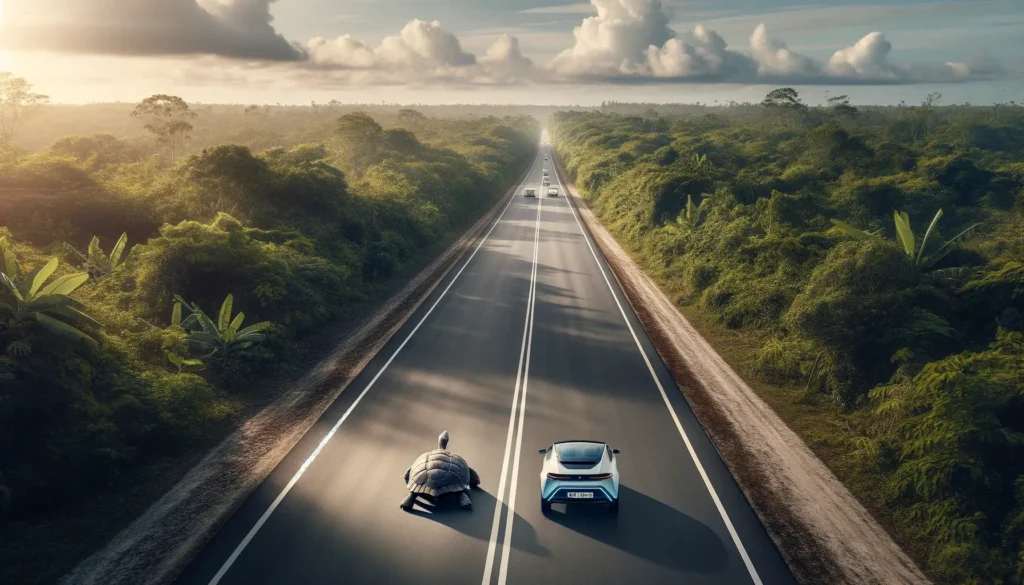The United States’ ambitious transition to electric vehicles (EVs) has encountered a significant roadblock, raising concerns about vehicle range, limited charging capacity, and core affordability issues.
Automakers, in recent weeks, have adjusted their EV sales targets and delayed capital projects as they grapple with reducing inventories of unsold EVs at dealerships. While the shift towards sustainable transportation is underway, challenges related to the range of vehicles and the charging infrastructure have emerged as significant hurdles.
EV Sales Slowdown: A Complex Challenge
Neil Saunders, managing director of GlobalData, emphasizes that the slowdown in EV sales is more pronounced than in other vehicle categories and isn’t solely tied to economic factors. According to Saunders, the EV market faces a unique challenge due to the complexity of the purchase process, particularly concerning the range of the vehicles and the inadequacies in charging infrastructure.
American consumers, accustomed to lengthy road trips due to the country’s vast size and limited public transit options, find the existing network of EV charging stations unreliable and lacking in many areas. While over three-quarters of drivers consider EVs reliable, a survey by the Consumer Technology Association (CTA) reveals significant doubts among drivers about inadequate charging infrastructure (36 percent), battery range (39 percent), and vehicle affordability (38 percent).
Addressing Range and Pricing Concerns
The average price of an EV sold in October was $51,762, approximately $13,000 below the previous year’s level but still almost $4,000 higher than the average price of all vehicles. In Europe, the elevated price of gasoline provides an incentive for consumers to overlook the high upfront cost of EVs. However, in the United States, where gas prices are about half the level in European countries, the economic motivation to switch to EVs is less apparent.
Industry leaders, including Tesla Chief Executive Elon Musk, have pointed to increased borrowing costs following a series of Federal Reserve interest rate hikes over the past year and a half. Despite the dominance of Tesla, accounting for over 55 percent of the 873,000 EVs sold in the first 10 months of 2023, according to Kelley Blue Book, challenges persist.
Ford’s Chief Executive, Jim Farley, anticipates “some bumpiness” in the evolving US market. Factors such as pricing, adoption rates, and regulations are compelling automakers to reduce the cost of EVs further. General Motors, Ford’s Detroit rival, recently delayed its plan to convert its Orion, Michigan plant for EVs until the end of 2025, citing the need better to manage capital investment in line with evolving EV demand.
Simplifying Manufacturing Processes
Both Ford and Tesla are adapting their strategies to simplify manufacturing processes and reduce costs. Tesla’s Chief Financial Officer, Vaibhav Taneja, emphasizes that reducing the cost of vehicles is their top priority. Ford, too, has committed to tweaking its vehicle design and manufacturing to streamline processes and limit complexity.
In the case of Tesla’s highly anticipated Cybertruck, which is expected to commence deliveries by the end of 2023, the company is striving to simplify the vehicle to achieve unprecedented efficiency in the auto industry, as mentioned by Elon Musk. Despite these efforts, Deutsche Bank analyst Emmanuel Rosner expresses concern, stating that automakers have yet to crack the economics to make EVs easy and affordable.
Government Initiatives and Policies
The Biden administration has mobilized in favor of EVs, allocating $7.5 billion in funds for EV chargers and extending tax credits up to $7,500 for consumer purchases of EVs. The administration has set an ambitious goal for 50 percent of vehicle sales to be electric by 2030. While these initiatives demonstrate political will, challenges persist in ensuring the necessary infrastructure is in place to support widespread EV adoption.
Neil Saunders of GlobalData notes that while politicians desire an overnight transformation, the reality is that achieving widespread EV adoption requires careful planning and investment in charging infrastructure. Saunders suggests that the long-term trajectory for EVs is positive but acknowledges that progress is slower than desired.


